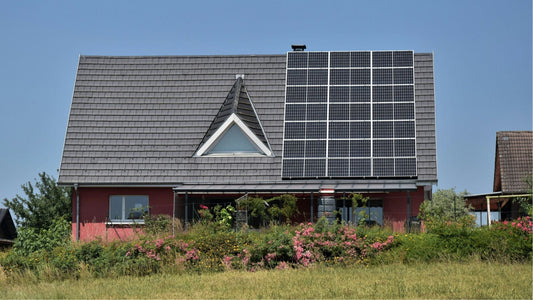Installing a solar panel kit is a great way to reduce energy costs and contribute to a greener planet. Whether you're a DIY enthusiast or planning to hire professionals, understanding the installation process can help you make informed decisions and ensure a smooth setup. This guide will walk you through the basic steps of installing a solar panel kit from ROCKSOLAR, with references to their extensive collection of kits suitable for various needs.
Step 1: Choose the Right Kit
Start by selecting a solar panel kit that fits your energy requirements and installation space. ROCKSOLAR offers a variety of solar panel kits designed for different applications, including residential, RVs, and more. Each kit typically includes solar panels, an inverter, mounting hardware, and sometimes a battery system for storage.
Step 2: Site Assessment
Assess the installation site. The ideal location is a south-facing roof in the Northern Hemisphere, with minimal shade and enough structural strength to support the panels. If a roof installation isn't feasible, consider a ground mount or a pole mount setup.
Step 3: Obtain Permits
Before you start, check with your local building codes and obtain necessary permits. Solar installations often require electrical and building permits to ensure they meet local regulations and safety standards.
Step 4: Install Mounting Equipment
Begin the physical installation by setting up the mounting system. This includes installing mounts or racks that will hold the solar panels. Ensure they are securely anchored and aligned for maximum sun exposure.
Step 5: Install the Solar Panels
Once the mounts are in place, attach the solar panels. Make sure they're securely fastened and connected properly. It’s critical to ensure good electrical contacts to prevent performance issues.
Step 6: Wiring and Connections
Connect the solar panels to the inverter, which converts the DC electricity generated by the panels into AC electricity that can be used in your home. If your system includes a battery, connect it according to the manufacturer's instructions to store excess power.
Step 7: Connect to the Grid
If your system is grid-tied, you’ll need to connect it to the utility grid. This step usually requires a professional electrician to ensure safety and compliance with local electrical codes.
Step 8: System Testing
Once everything is connected, test the system to ensure it's working correctly. This involves checking the inverter’s display to monitor production and ensure there are no system errors.
Step 9: Final Inspection and Commissioning
Arrange for a final inspection by local authorities if required. Once approved, you can officially commission your system and start generating solar energy.
Step 10: Regular Maintenance
Maintain your system to ensure optimal performance. This includes cleaning the panels regularly and checking for any damage or wear.
Conclusion
Installing a solar panel kit is a rewarding project that not only saves money but also increases your energy independence. By following these steps and choosing a reliable kit from ROCKSOLAR’s collection, you can enjoy the benefits of solar power for years to come. For more detailed information on specific kits and to purchase directly, visit ROCKSOLAR’s solar panel kits page.
This guide aims to demystify the solar panel installation process and encourage more homeowners to embrace this sustainable technology.




